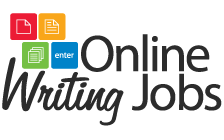Hello team!
Almost every day we get questions about article formats. More often than not, there’s a good description of what the client wants in the article description. But sometimes things are a bit vague, and an overview of different article formats would be helpful.
Ask and ye shall receive!
Here’s our four most popular article formats:
Article: A standard article should be a minimum of 500 words, though some may require a higher word count. Please break the article down into paragraphs and subsections. Links should either be embedded within the article linking to appropriate words, or listed as bullet points under paragraphs. Be sure the links make sense – they should flow seamlessly in the article, and no link should be set up with a sentence such as “For more information on this topic, visit this site, click here, this website, etc.”
Glossary: A glossary is a list of terms and their definitions in list (not paragraph format). Glossaries should follow this format:
Term: definition.
Term: definition.
Term: definition.
These MAY or MAY NOT require links; always refer to the article description for clarification. Please always include the correct amount of terms!
Links Page/Resource Page/Reference Page: A list of links; these are usually accompanied by descriptions of the links (but not always!). This type of assignment will have less content and more about providing useful and resourceful links. If the instructions call for a links page, do NOT embed links in paragraphs or write sentences with links in them. The format should be as follows:
Link 1: description of the link.
Link 2: description of the link.
Link 3: description of the link.
Timeline: Unless stated otherwise, timelines should be formatted like this:
Date: information.
Date: information.
Date: information.
Are there any I forgot? As always, please email me with any questions, or post a comment!
